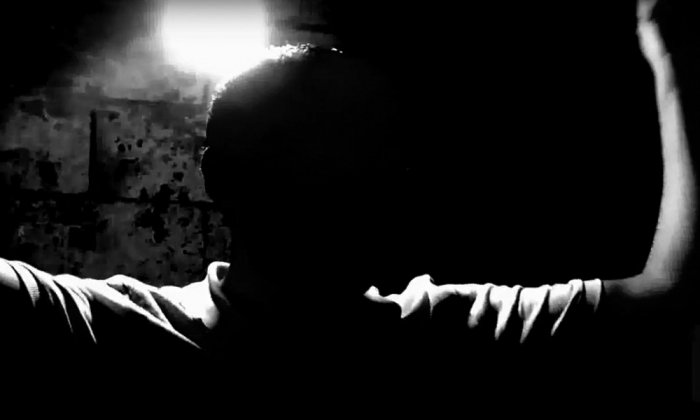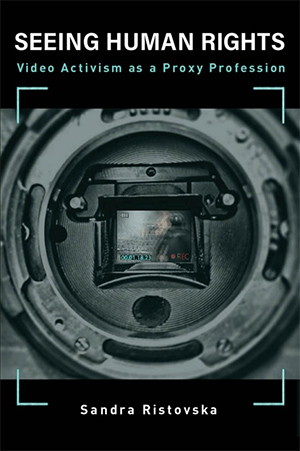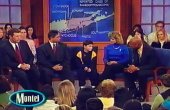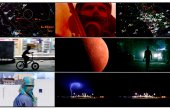Of Trauma, Testimony, and the Power of Human Rights Voices

For the philosopher and sociologist Jean-François Lyotard, the “‘perfect crime’ does not consist in killing the victim or the witness (that adds new crimes to the first one and aggravates the difficulty of effacing everything),” as he explains in his most important work “The Differend,” “but rather in obtaining the silence of the witness, the deafness of the judges, and the inconsistency (insanity) of the testimony.” Indeed, in the context of human rights work, the silencing of voice — whether on the part of the victim who cannot speak out or on the part of the addressee who does not listen — signals a moral dispute of the first order.
Part of the work of human rights activists has thus been to break down the silences: to enable trauma survivors to testify, to secure an audience that can bear witness to their experiences, and to find corroborating evidence. Human rights video activism is closely tied to the struggle to assert voice in ways that make a difference.

On a basic level, video is a vehicle through which survivors testify, claiming an acoustic voice in its literal dimension. According to Pierre Bairin, the former multimedia director at Human Rights Watch (HRW), “The people we interview understand the power of video and the importance for them to testify because often the people we talk to [are the ones] nobody listens to. So we go and [ask them] to tell us what happened, what went wrong, and they understand that they can make a difference.”
Trauma needs voice to articulate the suffering and start the healing process; in the form of testimony, that means breaking the silence about the experienced trauma. The ability to testify in front of an audience also gives the human rights voice the power to assert personal experience as publicly relevant. Testifying is therefore a political act that indicates agency.
Voice also has visual qualities. It renders images meaningful beyond their denotative and connotative appeals. When human rights collectives invoke descriptions of video as a tool that provides a “deeper insight into what the realities are [on the ground],” as activist and WITNESS program coordinator Raja Althaibani tells me, they underscore an understanding of voice as visual. Video thus relies on a particular relationship between the aural and the visual, necessitating an engagement where hearing is seen and seeing is heard.
The philosopher Slavoj Žižek’s provocation “I hear you with my eyes” speaks to this mode of involvement. Following Jacques Lacan, he argues that “silence is not … the ground against which the figure of voice emerges; quite the contrary, the reverberating sound itself provides the ground that renders visible the figure of silence.” In this sense, through video, silence can make human rights survivors heard even before they speak.
Through video, silence can make human rights survivors heard even before they speak.
This is what historian and filmmaker Christian Delage refers to when stating about the Nuremberg trials that the “audiovisual mediation reflected the true essence of Nuremberg in a way that words could not.” He sees the 11 seconds of silence in the testimony of one Holocaust survivor as the most powerful and telling part of the witness’s statement, one that best verbalized his suffering. This moment is available only on the audiovisual recording of the trial, not in the transcripts, where the silences were edited out. The centrality of video as a platform for acoustic and visual voice rests precisely on its ability to communicate what otherwise seems to resist and exceed representation.
In 2013, WITNESS screened a video about sexual and gender-based violence in the eastern provinces of the Democratic Republic of Congo to government officials in the country. The video includes personal testimonies of women who were sexually assaulted by government soldiers and militia members. Even the title of the video, “Our Voices Matter,” signals the centrality of voice. The video was part of an advocacy action to press for compliance with relevant national and international laws. It was also used to seek assistance and reparations for women and girls whose lives had been affected by these crimes. By screening this video tactically to officials already prone to wanting change (or primed to listen to those seeking reform), WITNESS helped make these women’s voices heard.
Bukeni Waruzi, who directed the project, told me that the video contributed to the allocation of more compensation funds and that the DRC Ministry of Justice used the video to train legal professionals on the seriousness of these types of crimes. In Waruzi’s words,
“The Minister of Justice would tell us, ‘You know, the magistrates that we have, I’m not sure they understand the gravity of the rape crime. If they see this video, maybe they will, and they will interpret the law as they should.’ [The problem is that] in most of the cases they see the rape as a gang crime; … the perpetrator [is] fined $100, which is nothing, and [sentenced to] four weeks in prison, and that’s it.… So it didn’t seem like this crime was being perceived as a serious crime.”
Implicit here is the assumption that video is capable of capturing the magnitude of a human rights violation in ways that are more readily accessible, even in institutional spaces. Although testimony is part of the methodological toolkit for human rights fact-finding, its relevance surpasses the evidentiary dimension. This excess lies in the visuality of voice.
“Our Voices Matter” begins with a close-up shot of a young woman. There are a few seconds of silence before she says, “My name is Riziki Shobuto. We are twelve children in our house. I’m a student, but I missed the school opening this year.” The silence continues. After it, the viewer finds out that Riziki was raped. Seeing and hearing the silence is significant because it makes her voice heard even before she speaks. The silence creates a mood that directs the viewer on how to engage with the video testimony. The interplay of the visual and acoustic voice triggers an emotional engagement with the human rights story, reinforcing the complicated notion that through video, feeling can contribute to believing.
HRW’s video work also illuminates the acoustic and visual manifestation of voice. In 2016, it produced the video “LGBT Students Bullied in Japan.” The Japanese government was already slated to review its bullying-prevention policy. HRW turned to video as a tactic to seize this moment, urging Japan to name and protect LGBT people as a particularly vulnerable population.
The video starts with two images sketched in the style of Japanese manga. The voice of a bullying victim narrates the images through his testimony: “Ever since I was little, I was seriously physically abused because my mannerisms and way of talking was not like the other boys. I was not supposed to be myself. I needed to act like somebody else. I always believed that.” The images the testimony could evoke in the viewer’s mind do not directly relate to the first drawing this video shows, which only portrays a close-up of a face in profile with Japanese text in a bubble next to it. This seeming dissonance between the testimony and the drawing is crucial to how voice works. The cartoon draws the viewer’s attention to the eye of the depicted face, which appeals to the viewer’s imagination for its meaning.
The centrality of the visual and acoustic voice is implicit in how human rights collectives describe and operationalize video’s power in their work. In 2009, WITNESS coproduced a video with the Centre for Minority Rights Development in Kenya, “Rightful Place: Endorois’ Struggle for Justice.” The video documents four decades of forced evictions of the Endorois community from their lands. It emphasizes personal testimonies as authentic claims to justice. WITNESS submitted and screened this video in front of the African Commission on Human and Peoples’ Rights, which eventually ruled against the expulsions.
Priscila Neri, senior program manager, described the significance of the video when I interviewed her in 2015:
“The courtroom was in another country. These were Indigenous pastoralist communities who would never be able to go to the courtroom. So, I think, in that context, you being able to literally bring the voice of that person who is directly affected face to face … with the judges is something that photography can’t do, for example, and is something that other mediums can’t do as effectively because [with video] we’re hearing the person’s voice. We’re seeing the person’s face.”
The interplay of hearing their voices and seeing their faces is thought to help the viewer understand the magnitude of the human rights violation.
Even so, not all human rights videos show the face of the person who testifies. For safety reasons, sometimes the videos feature pixelated or shadowed faces. As part of a campaign for law enforcement units in Macedonia to reduce violence committed by police officers against sex workers, WITNESS coproduced “You Must Know About Me: Rights, Not Violence for Sex Workers in Macedonia” (2009). The video features testimonies of women who have been victims of violence. The viewers cannot see these women’s faces. Instead, black silhouettes are portrayed against a colorful background. Yet the women’s testimonies remain powerful: “I didn’t have any air to breathe.” “They took us to the Bit Pazar police station … they taunted us in the station. ‘Now dance, now stand like sheep.’ … They abused us.… They didn’t even give us water or bread.”
Reports can talk about human rights in abstract legal terms, but video, to quote filmmaker Veronica Matushaj, “puts a human face in the human rights atrocity story.”
Amnesty’s video “Nolwandle’s Story” (2013), on political violence against women in Zimbabwe, by contrast uses animation along with a personal testimony. This video captures how voice can be powerful even without directly seeing the speaker’s face. As a series of animated images show on the screen, the viewer hears Nolwandle’s testimony: “One time I was beaten about nine times, told to count how many strokes. There was this old woman next to me. She was also beaten. I stood up, and I just screamed for them to stop. I didn’t care whether they would do anything more to me because I had had enough.” The relationship between the visual aspect of voice and the pixelated and shadowed faces, or the replacement of the face with other images, is a corollary to the relationship between acoustic voice and silence. The absence of one helps the viewer understand the amplification of the other. This is why voice is central to how human rights videos function.
Voice also helps explain how human rights video works in journalism and the law. For example, when news organizations broadcast the footage provided by HRW on Syria’s torture centers — featuring drawings and testimonies — or a curatorial video on hate crimes in Russia — weaving eyewitness footage with LGBTQ activists’ testimonies — they played to the acoustic and visual dimensions of voice. For safety reasons, the faces of the torture victims are not shown in “Syria’s Torture Centers Revealed” (2012), yet this visual absence is strengthened by the power of testimony. The horrific eyewitness videos that make up “Russia: Gay Men Beaten on Camera” (2014) remain with its viewers, shaping how they hear and see the testimonies of the activists and trauma survivors.
As Carroll Bogert, president of The Marshall Project, tells me, human rights collectives insist that “the video has to be a story of a person. Instead of the horizontal wide, broad evidence, you need the vertical deep evidence…. It’s a weird thing because all day long our [researchers] are meeting people and hearing their stories, but [because of] the way they combine or the way they gather that evidence, they aren’t, in the end, writing up the whole story.” A report highlights the evidentiary scope of a human rights investigation, whereas a video reaches beyond truth-telling by capturing the emotional dimensions and perceived authenticity that undergird the testimonial act that is central for human rights work. Reports can talk about human rights in abstract legal terms, but video, to quote filmmaker Veronica Matushaj, “puts a human face in the human rights atrocity story.”
As the intervening variable between experience and action, witnessing has long constituted the main operational mechanism in human rights work. Video gains power through the assumptions associated with this tradition. It can document human rights violations as they unfold, it can bear witness to personal testimonies and experiences, and it can reference past trauma in the present. Video can mediate witnessing as an individual experience to other platforms. In doing so, it can strategically transform witnessing into material that is socially relevant and suitable for journalism, the law, and political advocacy. In other words, it can render witnessing appropriate for policymaking.
Witnessing also draws from video’s power to facilitate voice in that it designates a particular mode of seeing and feeling whereby seeing can be felt and heard and feeling can be heard and seen. Referencing the power of eyewitness video, Raja Althaibani, the program coordinator at WITNESS, told me that video “provides people who aren’t there the opportunity [to see and hear] what the individuals who were collecting and producing the content were witnessing and seeing firsthand.” In this way, video can potentially expand the spaces where human rights voices — in their acoustic and visual forms — matter.
At the same time, it is critical to remember, as I explain in my book “Seeing Human Rights,” that human rights collectives can be limited in what they can do to extend voices. These collectives seek to professionalize video activism to better leverage video’s policy potential in serving human rights goals across institutional and legal spaces. However, funding priorities, growing accountability to donors, the push for efficiency, and a preference for measurable impacts means that human rights collectives are less able to facilitate structural changes that value diverse voices. They are, in other words, beholden to market forces. Yet video’s ultimate potential for social change is implicated in how human rights activism negotiates institutional and professional dynamics with their respective logics and ideologies to make its voice matter. And voice is the oxygen for human rights.
Sandra Ristovska is Assistant Professor of Media Studies in the College of Media, Communication and Information at the University of Colorado Boulder and the author of “Seeing Human Rights,” from which this article is adapted.

